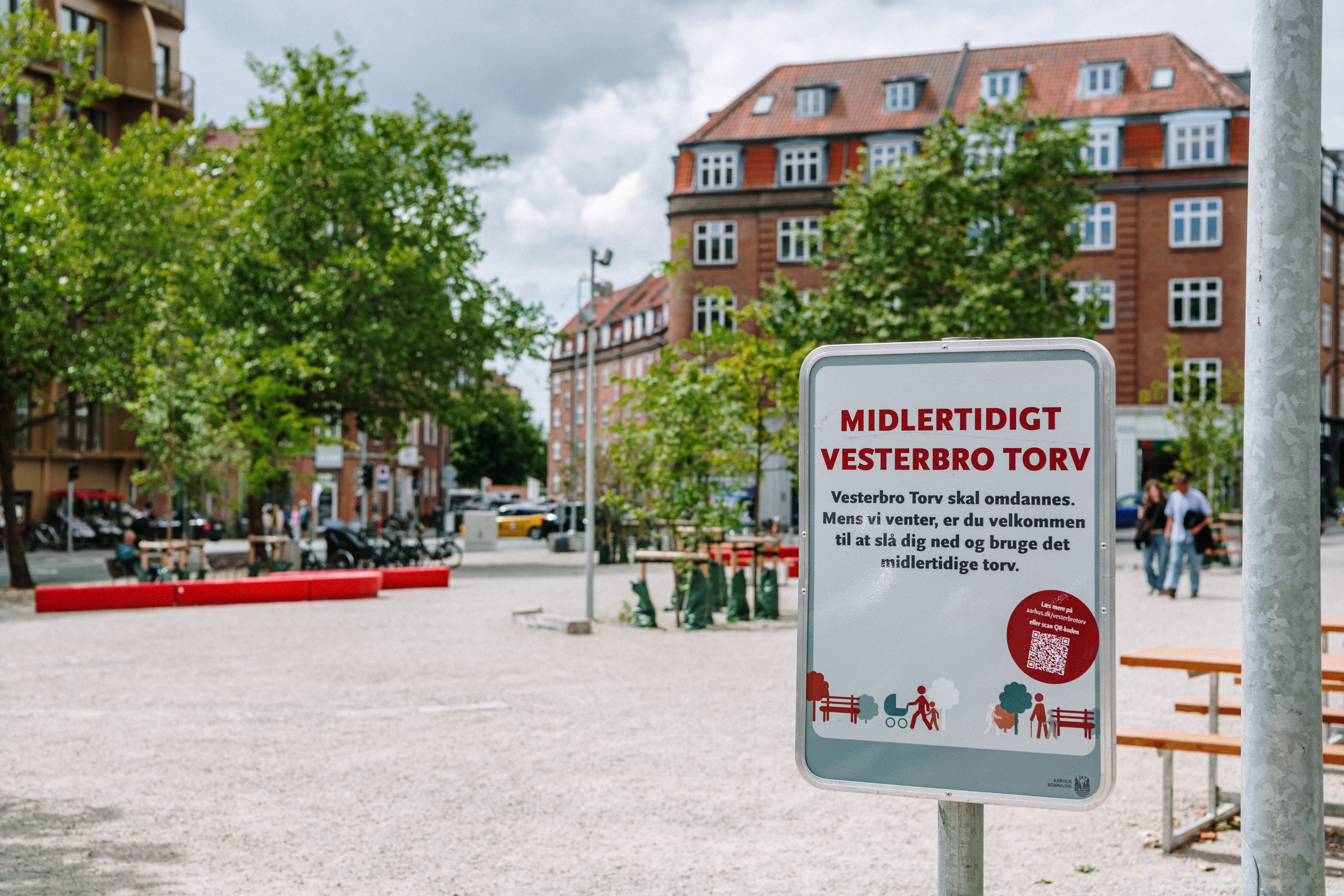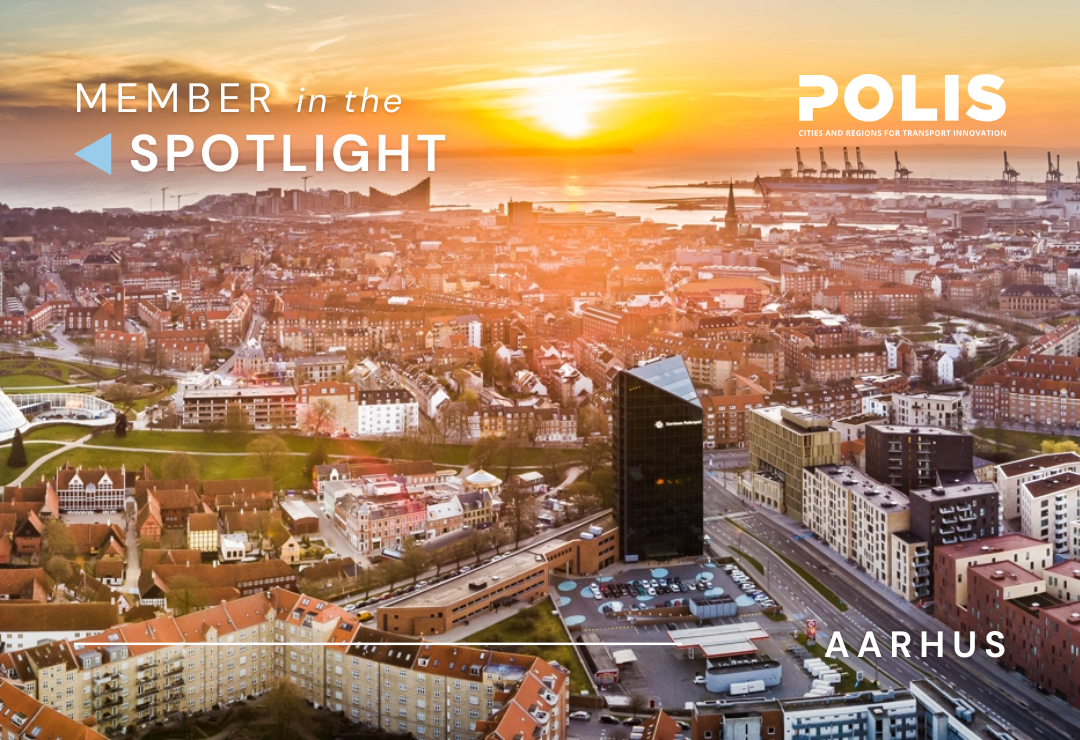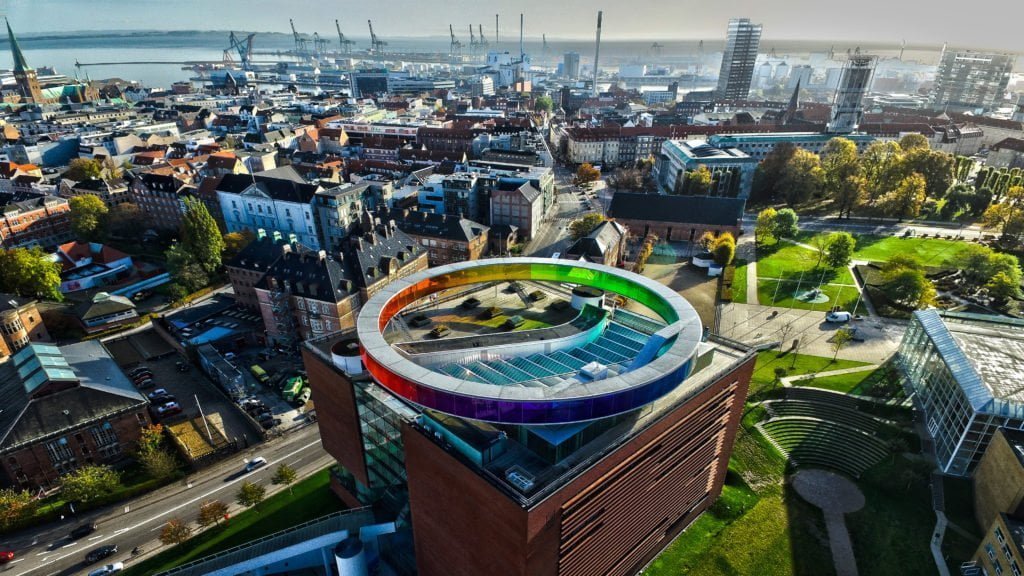Member in the Spotlight: Aarhus
To gain insights into Aarhus’ mobility transformation, POLIS spoke with Gustav Friis, Smart and Green Mobility Expert at the City of Aarhus, who shared his perspectives on the city’s vision, the challenges of rapid growth, and the role of international collaboration in shaping a sustainable future for urban mobility.
POLIS: Aarhus is on track to become carbon-neutral by 2030. What are the primary mobility initiatives contributing to this ambitious goal?
On 7 August a broad coalition in the Aarhus City Council agreed on a new ambitious green mobility plan. In the City of Aarhus, we are thrilled with the new green mobility plan agreement. This plan is more than just a technical document; it represents the culmination of extensive political negotiations where a broad majority of the city council has taken responsibility for the future development of our mobility system. The agreement is a cornerstone of Aarhus' strategy to achieve carbon neutrality by 2030 and to create a greener city with more space for commerce and urban life. Key initiatives include expanding our public transport network, particularly the A-bus system and Light Rail as well as improving cycling infrastructure. Additionally, we are focusing on road pricing to reduce congestion and enhance electric vehicle adoption by expanding our charging infrastructure. The strong political commitment ensures these ambitious goals will be implemented effectively.

Aarhus prioritises a greener city with more space for commerce and urban life. Credit: Aidin Esmaeli, City of Aarhus
POLIS: As Denmark's second largest and fastest-growing city, what unique challenges does Aarhus face in its efforts to innovate urban mobility?
As Denmark's second largest and known as one of the fastest-growing cities in the country, Aarhus faces several unique challenges in innovating urban mobility. The population growth increases the demand for efficient transportation while requiring careful planning to prevent congestion. Balancing the need for sustainable solutions with the spatial constraints of an expanding urban area is a significant challenge. The City of Aarhus’ new green mobility plan reflects the city council’s understanding that immediate action is essential. The decision to prioritise public transport and cycling infrastructure over traditional car-based solutions, such as the expansion of the A-bus network and Light Rail, highlights our commitment to reducing CO2 emissions. The political consensus behind this plan ensures that these challenges are met with a balanced approach that considers the needs of all residents.
POLIS: Aarhus has been a key participant in various international projects, including DISCO, SURF, Interreg NSR Active Cities, and SHARE-North Squared. How have these collaborations influenced the city's mobility strategies?
The City of Aarhus’ participation in international projects like DISCO, SURF, Interreg NSR Active Cities, and SHARE-North Squared has indeed influenced our mobility strategies. These collaborations provide valuable insights and best practices that is helping shape the development of our green mobility plan. For instance, DISCO helps us explore ways to decarbonise urban transport, while SURF has supported the integration of sustainable freight solutions. The Interreg NSR Active Cities and SHARE-North Squared projects have inspired us to new ways of implementing mobility management and promote shared mobility. The broad political support for our mobility plan reflects a shared understanding that the lessons learned from these projects will be essential for achieving our carbon-neutral goals by 2030. This international cooperation ensures that Aarhus remains at the forefront of sustainable urban mobility innovation.
POLIS: The city has a strong tradition of cooperation and social cohesion. How does Aarhus engage its citizens in the planning and implementation of sustainable mobility initiatives?
The City of Aarhus strongly values citizen engagement in the planning and implementation of sustainable mobility initiatives. The recent green mobility plan, which has received broad political support, is a testament to this approach. The plan will be followed by extensive public involvement, including dialogue with businesses, interest groups, and community councils. This engagement will start with a series of events and meetings throughout the autumn of 2024, continuing up to 2030. By involving the community, we ensure that the measures are well understood and supported. Additionally, the plan includes an annual evaluation mechanism, allowing for adjustments based on the feedback and needs of our residents. This dynamic approach ensures that the plan remains relevant and effective, reflecting the voices of Aarhus citizens.
POLIS: Aarhus aims to be a city for everyone, balancing growth with liveability. How does the city ensure that its mobility plans cater to all residents, including vulnerable groups?

Inclusivity is key in urban planning. Credit: Aidin Esmaeli, City of Aarhus
In The City of Aarhus, we are committed to creating a mobility system that serves all residents, including vulnerable groups. Our new green mobility plan, developed through a broad political consensus, emphasises inclusivity and accessibility. We want to implement universal design principles into our transport infrastructure to ensure that people with disabilities, the elderly, and families with young children can navigate the city with ease. The plan includes initiatives such as the expansion of the A-bus network with high frequency and the upgrade of cycling infrastructure, which will benefit all residents. Additionally, the creation of traffic islands and speed zones in residential areas aims to improve safety and reduce noise, making neighbourhoods more liveable for everyone. The annual evaluations built into the plan allow us to make necessary adjustments, ensuring that the mobility needs of all citizens are continuously met.
POLIS: With a focus on decarbonisation, what specific measures has Aarhus taken to reduce emissions from urban freight and logistics?
The City of Aarhus’ green mobility plan includes several measures to reduce emissions from urban freight and logistics, all of which are integral to our goal of achieving carbon neutrality by 2030. We are promoting the use of electric and hybrid vehicles for last-mile deliveries and are creating low-emission zones in the inner city to encourage this transition. Additionally, the introduction of road pricing is aimed at reducing congestion and spreading traffic outside peak hours is being considered. This measure is expected to significantly decrease CO2 emissions from freight transport. The strong political support behind the plan ensures that these measures will be implemented effectively and will contribute to a greener and more sustainable urban logistics system in Aarhus.
POLIS: Active travel is a central component of Aarhus' mobility strategy. What initiatives have been most effective in increasing walking and cycling in the city?
Active travel is a key focus of The City of Aarhus’ new green mobility plan, which has been developed with broad political support. The plan prioritises the expansion and upgrade of our cycling infrastructure, including the main cycle route network and the construction of a large bicycle parking facility at Aarhus Central Station.

Aarhus has been planning bicycle parking throughout the city. Credit: Aidin Esmaeli, City of Aarhus
Additionally, the creation of safe cycling routes and improved bicycle parking throughout the city has made cycling a more attractive option for residents. The plan also includes initiatives to promote walking, such as the establishment of traffic islands and reduced speed zones in residential areas. Furthermore, dedicated walking routes with a special focus on art and culture are part of the new green mobility agreement. The annual evaluation mechanism included in the plan ensures that these initiatives remain effective and responsive to the needs of Aarhus residents.
POLIS: The integration of digital technologies and Intelligent Transport Systems (ITS) is crucial for modern mobility. How is Aarhus utilising these technologies to enhance its transport infrastructure?
In The City of Aarhus, we are leveraging digital technologies and Intelligent Transport Systems (ITS) as key components of our green mobility plan. These technologies are being used to optimise traffic flow, reduce congestion, and improve overall transport efficiency. For example, smart traffic management systems that adjust traffic signals in real-time are being implemented to prioritise public transport and reduce delays. We are also integrating digital platforms that provide real-time information on bus and Light Rail schedules, making public transport more user-friendly. Additionally, the plan includes the development of mobility hubs that combine various modes of transport, supported by ITS, to create seamless travel experiences. These innovations are essential for achieving our carbon-neutral goals and ensuring that Aarhus remains a leader in sustainable urban mobility.
POLIS: Looking ahead, what are the next major milestones for Aarhus' mobility strategy, and how will they contribute to achieving the city's vision for 2030?
Looking ahead, The City of Aarhus is focused on several key milestones within our green mobility plan, which has been forged through extensive political collaboration. One of the major goals is the continued expansion of the Aarhus Light Rail, including a new stage to Brabrand and the development of Bus Rapid Transit (BRT) on one of the Ring Roads. The plan also aims to increase the number of low-emission zones and enhance the adoption of electric vehicles through an expanded charging network. Another significant milestone is the support of road pricing implementation to reduce congestion and promote sustainable travel choices. The introduction of a zero-emission zone in the central city is also a priority, subject to national legislation. These initiatives are crucial for meeting our ambitious CO2 reduction targets and ensuring that Aarhus achieves carbon neutrality by 2030. The annual evaluations will allow us to adjust our strategies as needed, ensuring that we stay on track to meet our goals.

With pioneering initiatives and a citizen-driven approach, Aarhus is transforming urban mobility by prioritising public transport, cycling, and inclusivity, paving the way for carbon neutrality by 2030. Design by Annalisa Gozzi.

